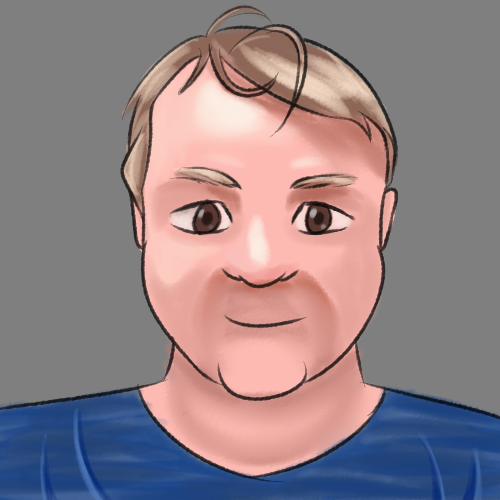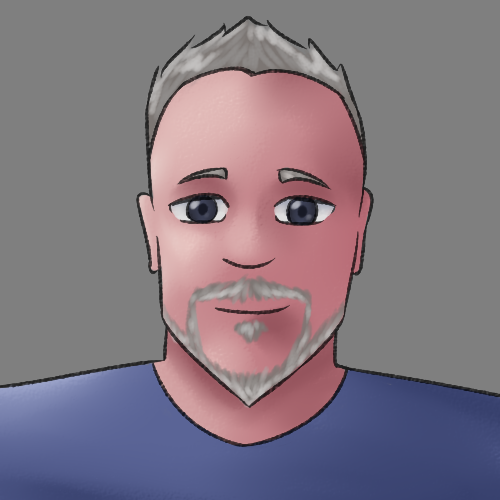The Universal Interactive Story
Part 2: The Industry (1990-1994)
The turn of the 1990s was dominated by one word – multimedia. Consumer technology was just reaching the point where video could be reliably stored and played using computers. Not only that, but the 16-bit era of consoles brought attention to useful incremental features like 3D primitives, texture manipulation, alpha blending, and methods for interactive storytelling.
However, as we’ll see in this segment of the Universal Interactive story, it’s not always in the obvious places where big changes are made.
The Little Consoles That Could
In 1991, the talk of Wall Street was Trip Hawkins, the charismatic founder and CEO of Electronic Arts. Within the prior four years alone, his company had reverse-engineered a Genesis to coax a favorable deal out of Sega, signed on John Madden to lend his name and likeness to a gridiron sim that would spawn a successful franchise, and began a phase of in-house development from both acquired studios and newly-hired developers.
However, a new hardware project that was cooking behind the scenes at EA was also taking his attention. In a move that shocked Wall Street, Hawkins resigned as CEO and created an unassuming company called San Mateo Software Games (SMSG) in a former EA building. Soon, that company would be renamed The 3DO Company, talking up the press about the new entertainment console they were making.
More impressively, even SMSG was catching attention for the wide slate of companies Hawkins was able to sign on as investors. Early on, there was Time Warner and of course EA. Then as the console materialized and decisions were made to license their technology out, 3DO gained hardware partners – most crucially of all, Matsushita/Panasonic.
However, the market was already saturated with companies that took the first dives into hardware. In 1990, Philips officially released the Compact Disc Interactive (CD-i), an implementation of their Green Book standard from 1986 that was meant to further their mission to make CD a worldwide standard for more than just music. To that end, Philips assembled a development studio to build games. And part of that team, in the QA department at the time, was a guy named Michael John.

Philips had co-created what they called the Red Book, which is the audio CD standard, and were making tons of money on that, and they thought: “Well, we can make a new CD format. We’ll call it CD Interactive, for all the ‘multimedia’ of the world, which was the key money-making phrase of the day. It’s like the ‘blockchain’ of then. And we’ll create a specification for it, and then we can dominate that business as well.”
So they hired a whole bunch of people to make a bunch of content to kinda kickstart this whole format, which actually I think history has proven was a terrible idea and failed. But I got involved in that, originally just as QA, and then eventually was working basically as Associate Producer or something like that, as they were trying to bring a lot of game content onto the platform.
You probably maybe are aware of some of the Nintendo licenses. I had the great opportunity of being a QA tester for a couple of those, and I was like: “Agh, what are you doing?” It wasn’t pretty, but mostly Philips ended up being on the outside looking in, as far as the game industry was concerned.
The Goliath
EA’s deal with Sega was arguably fortuitous, in that the Sega Genesis got an early foothold in the great Console War with Nintendo. That story, of course, is much larger than can fit here. But a number of people at Sega would factor into the Universal Interactive story as well.
Mark Cerny had spent much of the late ’80s at Sega in Japan. A fluent Japanese speaker, Cerny was one of few Americans who had good relationships with the executives and staff there. In 1991, he convinced them to create a new R&D studio in the United States, called Sega Technical Institute.
Prior to that, Sega’s main presence in America was a small run-down office in San Francisco. Among the most senior executives in that building was Paul Rioux, a Vietnam veteran who worked with CEO Tom Kalinske at Mattel before they reunited to take on Nintendo.
While Rioux and Kalinske did that, Cerny tracked down Yuji Naka, who left Sonic Team after tensions in Japan, and convinced him to stay with his elite cross-cultural team in San Jose. Along with ex-Sonic Team refugees, STI hired fresh local talent like Craig Stitt, who was doing corporate art for a local company called Genigraphics, when he answered a newspaper ad for artists.
As it turned out, the cross-cultural ideal of STI was also its greatest weakness, as the team faced tensions and hardship while developing Sonic the Hedgehog 2. Famously, Naka would only agree to make Sonic 3 on the condition of being in a fully-Japanese team. Cerny also left after Sonic 2, which left STI in limbo until closing under their failure to make a 3D Sonic game for the upcoming Saturn.
The Upstart
Cerny ended up at Crystal Dynamics, a studio that had just been founded by other Sega refugees. It got attention in the press for hiring Strauss Zelnick, former president of 20th Century Fox and future Take-Two CEO, in 1993. Despite it not being explicitly a studio outfit, a lot of expectations were put on the studio.
Unfortunately, they did not pan out as well as they’d hoped, but the environment was still important for the gestation of talent, and even of supporting figures. A late hire to the party was Jackie Evanochick (later Jackie Weyrauch), a production assistant with prior stints at Warner Bros. Records and Industrial Light & Magic.

I worked at Warner Bros. Records (which is the label Prince was on), and when I ended up at ILM, and we were doing a recruiting party, I was in charge of the entertainment. I reached out to Prince’s people about him performing at the recruiting party for ILM with the photograph. It was in Orlando, and Prince’s management sent me this CD-ROM.
LucasArts was right next door. I sat down with Randy Komisar, the president. He’s going through the CD-ROM to figure out, like, “Is there anything that we can do to use this for this party?” I realized there wasn’t, and that was the end of that, and I thought I’d keep on working on film.
Then I found myself reading The Hollywood Reporter and saying Randy Komisar had left LucasArts and went to Crystal Dynamics. And something made me cut that out of The Hollywood Reporter, and I put it in my my daytime catalogue, and I ended up contacting Randy and going to work with him down at Crystal Dynamics.
So I showed up and I got started working with John Hoarsely, who is the executive producer there, as the company was exploding in growth. But there was some turmoil with the original founder, Madeline Canepa, and Randy and the Board of Directors. The company ended up having this massive shutdown of probably about half the staff, and I was let go.
The Big Kid
Walt Disney Computer Software – or just Disney Software – was a loose label prior to 1994. The successes made by Michael Eisner and Jeffrey Katzenberg since the mid ’80s helped the company expand into pretty much any available market. But as far as video games were concerned, they could make due with third-party licensing deals. They made long-term deals with Capcom and Sega for the rights to make tie-in games well into the endgame of the Console War.
They got attention in 1992 for Virgin Software’s release of Aladdin on the Genesis. The well-documented collaboration between Disney Feature Animation and Virgin, along with Disney’s larger strategy of positioning their product as high art, helped promote the ideal of professional artists being the driving force behind game development.
In a year-long transition period, they hired a team of artists and producers to form the seed of a new division – Disney Interactive Studios. Among the new hires was John Fiorito, a graduate of the ArtCenter College of Design. His co-worker at Disney, Mike Cukar, recalled for another story:

ArtCenter was a huge pool for artists obviously, and the Interactive crew just exploded. They were doing the console games. Every week we were interviewing 2-3 artists. New artists, new artists, new artists. I was fortunate enough to be on the portfolio review group that was looking at artists coming in. And we were trying to compete. I was trying to pull as many people in from Cal State Fullerton as I could, and John [Fiorito] was pulling as many ArtCenter people as he could.
Throughout the mid ’90s, Disney Interactive was a massive in-house studio, mirroring Disney’s expansion into satellite animation studios, where several projects were made at a time. Among the other people in the Disney ecosystem through 1997 were artists Alexander Schaefer, Oliver Wade, and Kirsten van Schreven.

After getting my Masters in Fine Art at Chelsea School of Art in London, I went into the film industry directly. I worked in various feature film companies, then went to Island for a bit. Lot of pre-production, layout, background design. Then I went to work for Sony Psygnosis in London – we were working on Ecstatica II and Urban Decay at Andrew Spencer Studios.
From there, I went to Los Angeles. I worked at Creative Capers Entertainment, doing a lot of background work for the Animated Storybooks. You know, Hunchback of Notre Dame and 101 Dalmations.
Pieces Aligning
Let’s get back to Universal, so we can watch the pieces fall into place.
So through 1992-93, Steven Spielberg was working on two movies – Jurassic Park and Schindler’s List. Jurassic Park was the first to be made, but casting for Schindler was still being done simultaneously. Liam Neeson was cast in December 1992 in a long, tough period of reasoning. But one reason would start a chain reaction beyond the production of the film itself.
When I mentioned Robert Biniaz before, there’s one thing I didn’t want to mention until now – his family were Holocaust survivors. His mother in particular, Celina Biniaz, was just an early teenager when she braved Josef Mengele himself, and she is now popularly considered the youngest of the real Schindler’s list.
According to one interview, Spielberg wanted to make sure that Liam Neeson was faithfully cast as Oskar Schindler, and so Robert helped him reach out to his mother for a second opinion. Celina wasn’t involved in the production further, but she was invited to the premiere. Before the film came out, she was silent about her experience, but the release of the film gave her the appropriate venues to share her life story.
What happened next has been thus far untold, at least as far as who said what, or how long it took.
What we do know is that Skip Paul was on 3DO’s board of directors, representing both Matsushita and MCA in their stake of the company. And in order to properly supply games and software to 3DO’s lineup, MCA needed a dedicated unit. On January 3, 1994, Sid Sheinberg and Rob Biniaz joined with Paul to make an official announcement: MCA has launched Universal Interactive Studios, and it has a game called Jurassic Park Interactive already in development for the 3DO.
A few days later, in the Las Vegas Convention Center, Skip Paul took the stage at a 3DO press conference at Winter CES, right after Trip Hawkins. He said a few words about the new relationship: “It really represents a very meaningful watershed for an entire software industry. That is, the software industry and Hollywood.”
For the number-three, Paul sought out his fellow ex-Atari creator Mark Cerny from Crystal Dynamics, and they jointly took on the vision of a studio-run incubator for game developers.
The next step, of course, was to find the right people.